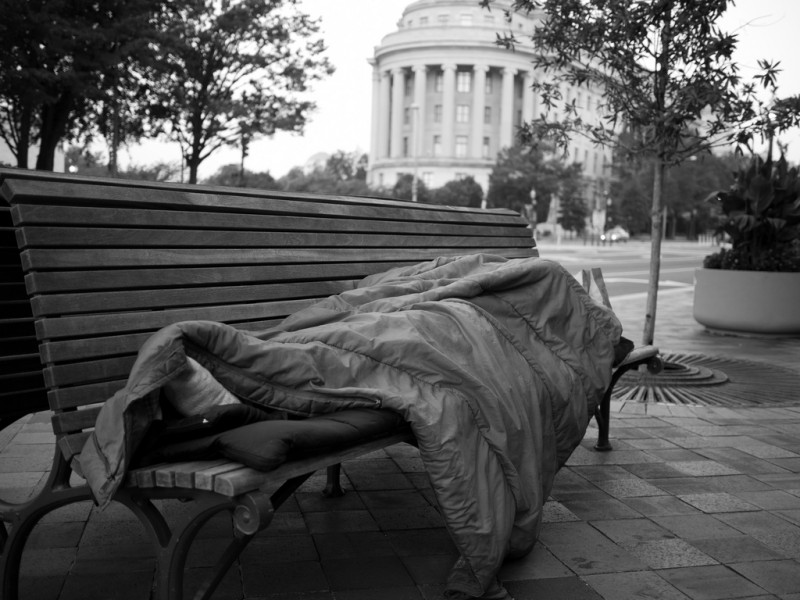Ward 3’s homeless shelter wins approval, but that’s not even the hard part

Image by Devin Smith licensed under Creative Commons.
More than a year after they were first proposed, two homeless shelters now have the necessary zoning approval to go up in Wards 3 and 5. For a city that talks a big game about diversity and inclusivity, this is a big step forward. But making room for disadvantaged families in all parts of the city will take more than just new shelters.
In February of 2016, Mayor Bowser announced her plan to close the DC General homeless shelter and open up replacement shelters in all eight of DC's wards. Many of DC’s homeless shelters are in Wards 7 and 8, and once those filled up (DC General in particular), the District started paying for hotel rooms along New York Avenue NE. The mayor’s logic is that concentrating these shelters and services in a few neighborhoods is unfair, and that it limits options for sheltered families seeking jobs and services and, ultimately, a better life.
Some residents pushed back hard, particularly in Wards 3 and 5. And while there were legitimate problems, most critiques repeated age-old not-in-my-backyardisms. Some of the opposition was about lack of community involvement. Some people testified about the building being too tall. Others said that schools would be overcrowded or under resourced to support the new students.
Letter being handed out at Ward 3 homeless shelter meeting. pic.twitter.com/hDFzKY4EVi
— Helder Gil (@hgil) May 26, 2016
Last week after many hours of public testimony, the Board of Zoning Adjustment (BZA), which is in charge of approving the zoning waivers needed to build these shelters, voted in favor of the replacement shelter plans. This means construction could begin as early as December 2017.
Vulnerable families need safe, vibrant neighborhoods
Before I worked at GGWash, I organized with homeless families at DC General. Families would often wait months to receive their housing voucher, then someone would give them a list of possible landlords around the city. Guess how many were in high opportunity neighborhoods in Ward 3.
The families I worked with were openly frustrated about this. Some had just left some of the more violent or distressed neighborhoods in the District, and they were not eager to go back to the same environment that had contributed to their fall into homelessness in the first place. Others worried about their kids, or even themselves, commuting to schools and jobs from these isolated neighborhoods with no car and few resources.
I remember one mother in particular who articulated the predicament: she was homeless and not asking for a fancy new home for herself and her two children, just a safe neighborhood, a clean home, and reasonable access to the services and places they needed to get their life back on track.
It goes beyond just sheltering the homeless. All wards should help house people as well.
The principle of spreading social services around the District is an important one. But given that DC needs more housing, both market-rate and affordable, that thinking should apply to offering homes at all price levels.
The District's population has grown, and some neighborhoods have seen massive growth alongside it. But restrictive zoning, political activism, and, in a few cases, lawsuits challenging specific development projects have kept new housing and new residents out of others.
These places are part of the reason why DC has a housing shortage. Just like we need shelters in all parts of the city, we need to create diverse housing options in all parts of the city. If your neighborhood does not have moderate or affordable rental opportunities, your neighborhood is part of the problem.
Creating those cheaper rental opportunities might mean building buildings that are taller so that increased profits can subsidize affordable units. It might also mean allowing homeowner neighbors to rent out basements or carriage houses, or divide up their home into multiple units. But regardless of what we allow with buildings themselves, we have to be able to put more homes in more parts of the District rather than concentrate them in small pockets.
During the long debates over these shelters, opponents often claimed they wanted to welcome homeless families in their neighborhood and that their opposition was not about keeping them out. In the flier at the top of this post, the author even included this line: “Stop the redistribution of shelters, start building homes for the homeless.” Great! I hope they were serious about the second part of their proposal.
With the BZA's approval for the shelters in Wards 3 and 5, we are one step closer to more inclusive and welcoming neighborhoods everywhere. Let’s make this permanent by creating the kinds of housing options low-income families need in order to stay and thrive in their new neighborhoods.
